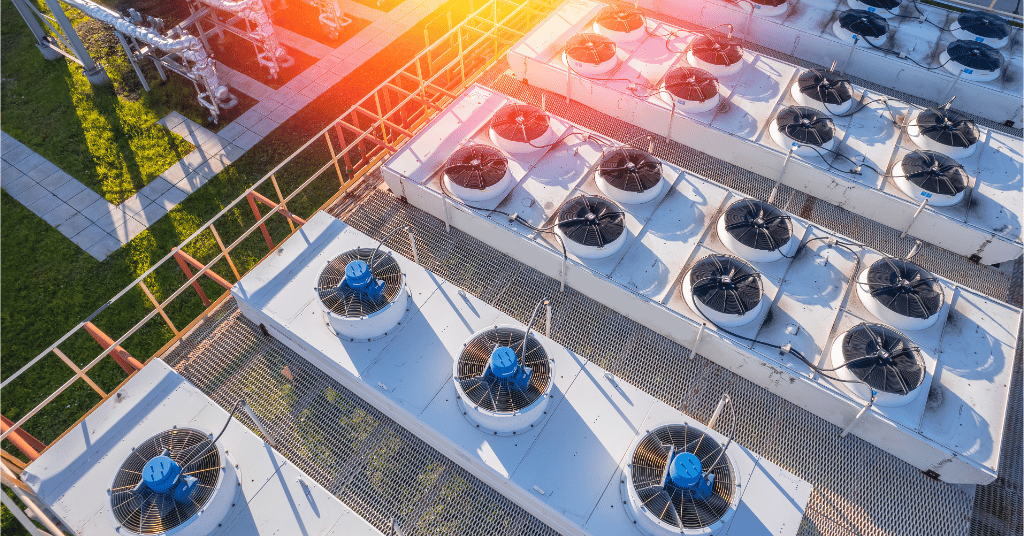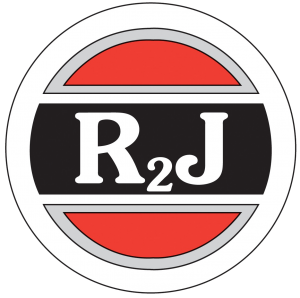Sustainable Water Management: Cooling Tower Best Practices
Aug 14, 2025How Much Water Does Your Cooling Tower Use?
The U.S. Environmental Protection Agency (EPA) estimates that for every ton-hour of cooling, a typical cooling tower evaporates about 1.8 gallons of water — equivalent to removing 12,000 BTUs of heat (EPA). For a large commercial or industrial facility, this can mean tens of thousands of gallons per day, especially in warm, humid climates like Florida.
In the Southeast, cooling towers often run nearly year-round. That’s not just an energy consideration — it’s a significant strain on local water resources. In a world facing a global water crisis and increasing water scarcity, operators must minimize avoidable loss from scaling, corrosion, drift, leaks, and inefficient blowdown to protect both drinking water supplies and operational budgets.

Why Cooling Towers Are Central to Sustainable Water Management
According to the EPA, cooling towers can account for 20%–50% of a facility’s total water use in commercial and institutional buildings. This makes them a priority target for those aiming to achieve sustainable water management and reduce overall water demand.
Poorly managed towers:
- Increase chemical consumption and wastewater discharge volumes
- Raise operating costs through excess water and energy use
- Accelerate wear on system components
- Increase public health risks, including Legionella growth
Optimizing cooling tower operations can conserve potable water supply, extend asset life, and align with sustainable development and water resources management goals, while supporting the human right to safe drinking water for local communities.
For more on operational best practices that protect both water quality and equipment, learn more about R2J’s Best Practices for Sustainable Operations.
The Bigger Picture: Water Stress and Industry Responsibility
Global water stress is no longer a distant concern — it’s affecting industrial and municipal systems today. The U.S. Geological Survey notes that industrial cooling is a major contributor to overall withdrawals from freshwater resources (USGS). As climate change continues to affect water availability through droughts and extreme weather events, the urgency for sustainable solutions grows.
Cooling tower optimization isn’t just about regulatory compliance or corporate responsibility — it’s about securing water for future generations while maintaining uninterrupted operations.
The Three R’s of Sustainable Cooling Tower Water Use
Improving cooling tower efficiency starts with a proven framework: Reduce, Replace, Reuse. Each of these strategies plays a role in conserving water resources, lowering operational costs, and ensuring the sustainable use of valuable freshwater resources.
Reduce: Minimize Unnecessary Water Loss
The most immediate way to conserve water is to eliminate waste. According to the U.S. Department of Energy’s Federal Energy Management Program, raising a system’s cycles of concentration (CoC) from 3 to 6 can cut blowdown volume by up to 50% and reduce makeup water demand by about 20%. For a 500-ton system, that can save over 2 million gallons annually.
Ways to reduce water loss include:
- High-efficiency drift eliminators to capture droplets before exhaust air leaves the tower
- Automated blowdown controls that respond to real-time conductivity readings
- Preventive maintenance to address leaks and ensure balanced water flow
Replace: Use Alternative Water Sources
Relying solely on potable water isn’t sustainable, especially in regions facing water scarcity. The U.S. Department of Energy (DOE) notes that many facilities safely replace a significant share of cooling tower makeup water with reclaimed water or non-potable sources when paired with proper treatment (DOE Better Plants).
Options include:
- Treated municipal reclaimed water
- HVAC condensate capture (often hundreds of gallons daily in mid-size buildings)
- Rainwater harvesting systems
These alternatives preserve municipal water supply, reduce costs, and support sustainable development goals.
Reuse: Recycle Water Within the System
Water reuse extends the life of each gallon that enters your system. Side-stream filtration and advanced treatment can make blowdown water suitable for reintroduction as cooling tower makeup or for other non-potable processes.
The EPA’s water reuse guidelines indicate that well-managed systems can reuse up to 15% of total cooling water without impacting water quality (EPA Water Reuse).
For a deeper dive into how filtration and treatment innovation enable reuse, see R2J’s article on Innovations in Water Treatment Technology.
Integrating the Three R’s
Adopting all three strategies together creates a compounding effect. Facilities that reduce, replace, and reuse often see:
- Lower water stress on local systems
- Reduced chemical procurement and handling needs
- Enhanced ecosystem protection by reducing wastewater discharge
These changes also prepare operations for increasing water and climate change regulations — helping ensure compliance while protecting future generations.
Four Challenges That Threaten Cooling Tower Sustainability
Even the most advanced cooling systems face operational risks that can compromise water sustainability, increase pollution, and reduce system reliability. Addressing these challenges is critical to protecting water quality, meeting regulatory requirements, and safeguarding ecosystems for future generations.
1. Scaling and Corrosion
Cause: High mineral content in surface water or groundwater, fluctuating pH, and inadequate treatment can lead to mineral buildup and metal deterioration.
Impact: Scale can reduce heat transfer efficiency by up to 30% (U.S. DOE), increasing energy use and costs. Corrosion can cause leaks, shorten asset lifespan, and raise maintenance expenses.
Solution: Maintain optimal cycles of concentration and use corrosion inhibitors with stable delivery. Solid-feed programs such as Smart Release provide consistent chemical control for scale and corrosion without the hazard of liquid handling.
2. Microbiological Growth
Cause: Warm, nutrient-rich environments in cooling towers encourage the growth of algae, bacteria, and fungi.
Impact: Biofouling reduces system efficiency and increases the risk of Legionella outbreaks, a serious health hazard addressed by ASHRAE 188 and OSHA guidelines. Unchecked growth can lead to costly cleanings, downtime, and public health liability.
Solution: Implement treatment systems that address biofilm and bacteria at their source. Advanced oxidation processes (AOP) break down contaminants without harmful byproducts, reducing chemical dependency and discharge concerns (Environmental Impact of Traditional vs. Advanced Oxidation Processes).
3. Inefficient Cooling Tower Management
Cause: Lack of real-time monitoring, irregular maintenance schedules, and untrained operators can destabilize water systems.
Impact: Excess blowdown wastes water resources and chemicals, while neglected issues can lead to higher wastewater treatment needs and environmental compliance violations.
Solution: Use smart automation to monitor water flow, chemistry, and cycles of concentration continuously. This enables proactive adjustments, reducing waste and improving operational stability.
4. Drift and Leaks
Cause: Inefficient drift eliminators, poor installation, or mechanical wear allow treated water to escape as mist or through leaks.
Impact: Drift losses carry chemicals into the environment, risk contamination of nearby equipment, and increase water use. Leaks directly waste potable and alternative sources, straining water supply.
Solution: Upgrade to high-efficiency drift eliminators, inspect mechanical components regularly, and implement a leak detection program to preserve safe water for operational and community needs.
Why Addressing These Challenges Matters
Mitigating these risks is not only an operational imperative — it’s part of a holistic approach to water resources management. By reducing waste, protecting water and sanitation standards, and preventing environmental contamination, facilities support sustainable development while meeting production goals.
Advanced Technologies Driving Sustainable Cooling Tower Management
Reaching long-term water sustainability goals in cooling tower operations often depends on treatment methods and control systems that minimize waste while protecting system integrity.
Advanced Oxidation Processes (AOP)
Systems like the Silver Bullet Water Treatment System use advanced oxidation to break down organic contaminants at a molecular level without leaving harmful byproducts. This reduces reliance on chlorine and other harsh chemicals, protecting water quality and reducing the environmental load on wastewater treatment facilities.
Solid Chemical Feed Systems
Smart Release delivers scale and corrosion inhibitors at a steady rate, improving chemical control and reducing hazardous handling. This precision helps maintain optimal cycles of concentration and prevents the overfeeding that wastes both chemicals and water.
Automated Controls and Monitoring
Automated blowdown controls, conductivity meters, and smart dosing systems enable real-time water management, reducing human error and ensuring optimal system balance. Integrating these systems supports sustainable development targets while lowering higher energy demands tied to inefficient operation.
Impact at Scale
Example Savings: 500-Ton Cooling Tower
According to the U.S. DOE’s Federal Energy Management Program (FEMP), increasing cycles of concentration from 3 to 6 can:
- Reduce makeup water use by ~20%
- Cut blowdown volume by ~50%
- Save 2–3 million gallons of water annually
- Lower chemical usage by 25–35%
- Reduce sewer discharge costs significantly
Closing the Loop: Efficiency, Compliance, and Stewardship
Cooling towers are one of the most controllable points of water use in large facilities — and a visible marker of environmental responsibility. By integrating proven best practices with modern treatment technology, operators can:
- Reduce water scarcity pressures and safeguard freshwater resources
- Cut operating costs from reduced water, chemical, and energy use
- Ensure compliance with water and climate change regulations
- Support economic growth and operational resilience for future generations
If your facility is ready to advance its cooling tower program and protect critical water resources, contact R2J to discuss sustainable solutions tailored to your system.
Frequently Asked Questions (FAQs)
How much water does a cooling tower use?
The EPA estimates ~1.8 gallons per ton-hour of cooling, which can total tens of thousands of gallons daily in large facilities.
What are cycles of concentration?
They measure how many times water can be reused in the cooling process before discharge. Higher cycles typically mean better efficiency but must be balanced with scale and corrosion control.
Can reclaimed water be used in cooling towers?
Yes — with proper filtration and treatment, reclaimed water, HVAC condensate, and other non-potable sources can replace a significant share of potable makeup.
How does sustainable water management help beyond operations?
It reduces strain on local communities, supports ecosystems, and aligns with corporate sustainability and ESG commitments.

